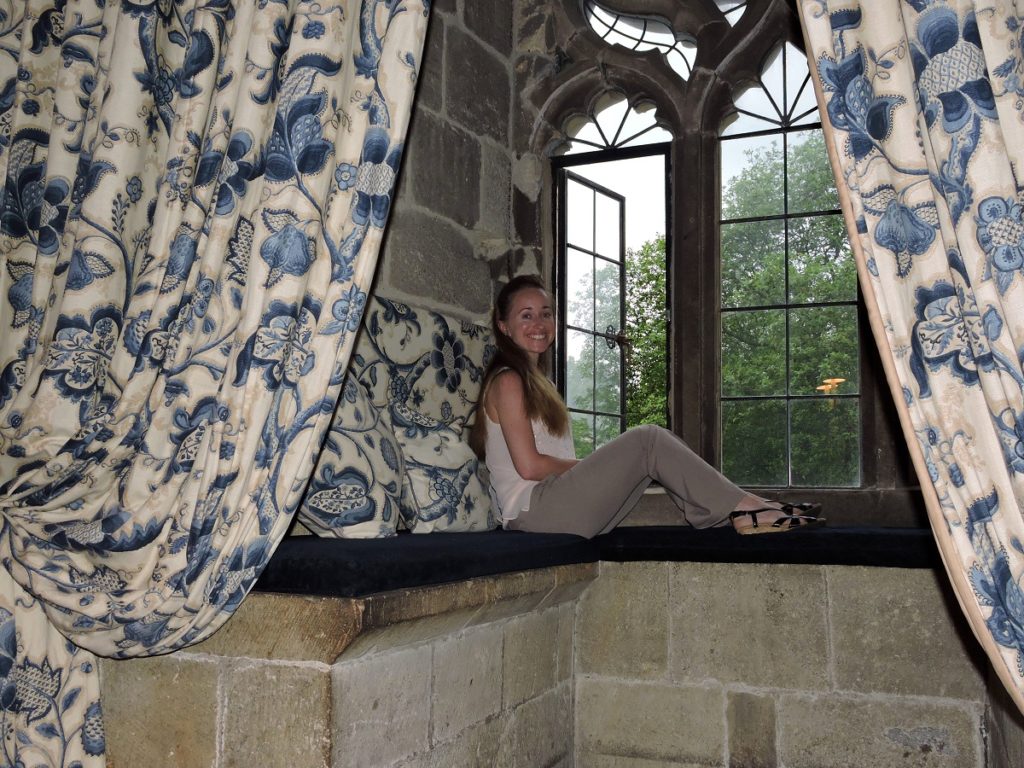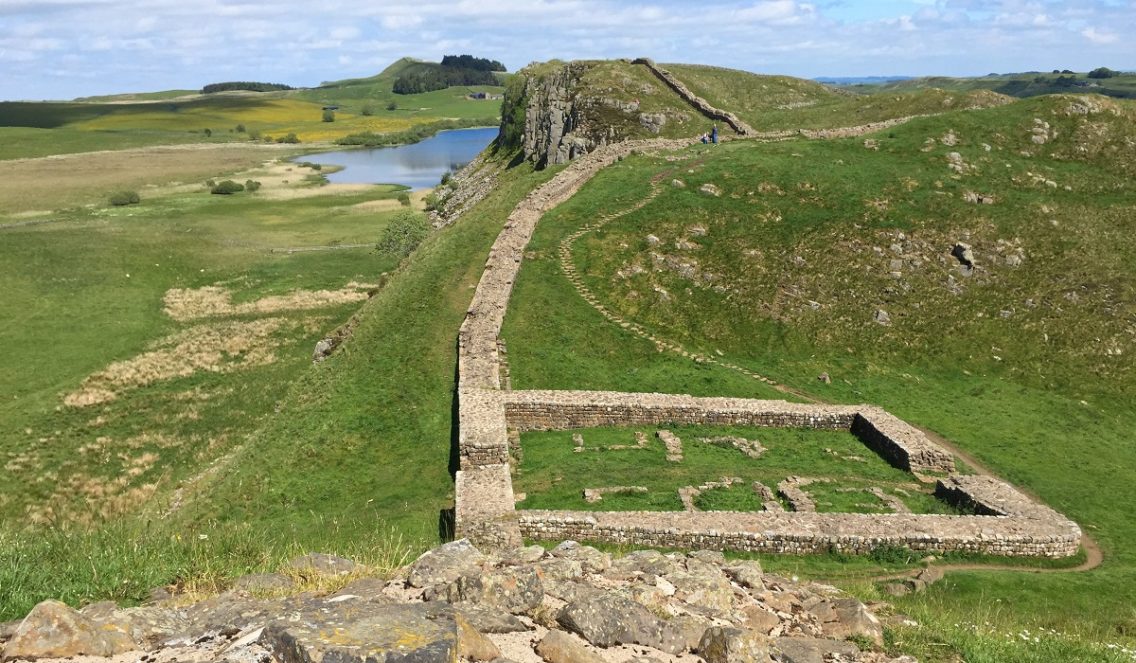I loved exploring the Roman ruins of Hadrian’s Wall in Northern England. Walking alongside history in the windswept beauty of Northumberland was exhilarating and enchanting.
Hadrian’s Wall was built during the reign of the Roman Emperor Hadrian to delineate and protect the Roman Empire’s border in England. Begun in AD 122 it took at least six years to complete and runs 73 miles from coast to coast. Some sections of the wall have fared better than others over the years. I decided to head for the section running through Northumberland. Not only is it one of the better preserved sections but there are also several other excavated Roman sites and museums in the vicinity.
The old market town of Hexham, on the River Tyne, is a great base for exploring Hadrian’s Wall. Especially if you have no transportation of your own. During the spring and summer, the aptly named AD 122 bus runs daily (and hourly) from Hexham to the wall and all the most prominent Roman sites nearby. (Check the official site at https://hadrianswallcountry.co.uk/travel/bus for the most current bus schedule).
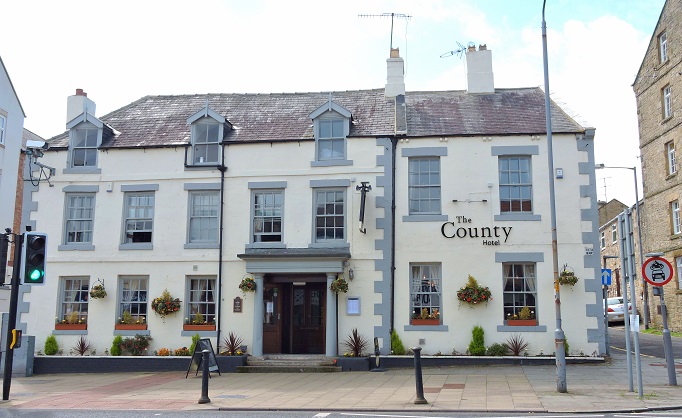
Hexham also has a few sites of interest on its own.
Hexham
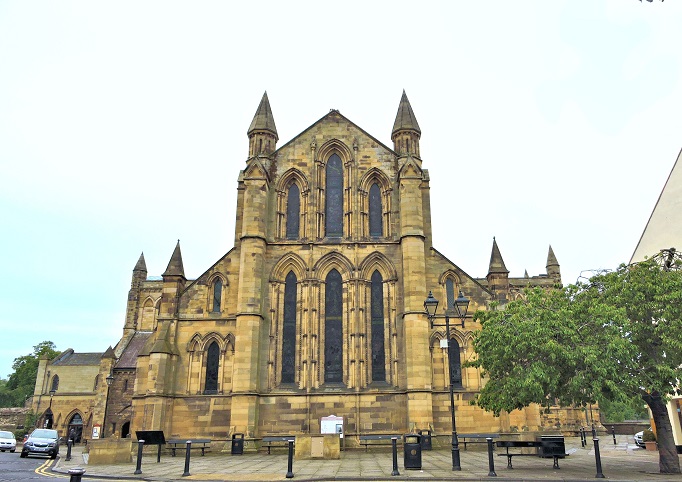
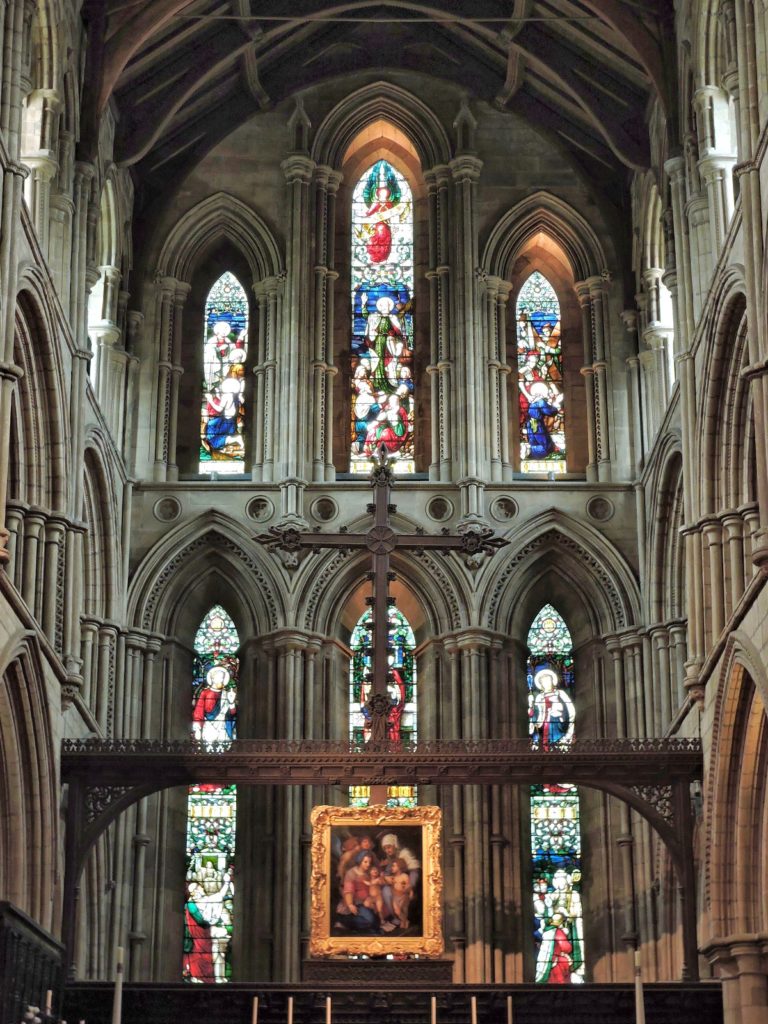
Hexham Abbey –
The original Abbey was built in AD 674, while the current Abbey dates to the 11th century with multiple additions and restorations since. There is one exception however, the crypt of the original monastery survives. You can visit the crypt and see how it was built with stones taken from Hadrian’s wall and nearby roman ruins. On some of the stones, (although very worn) you can still see roman inscriptions and motifs.
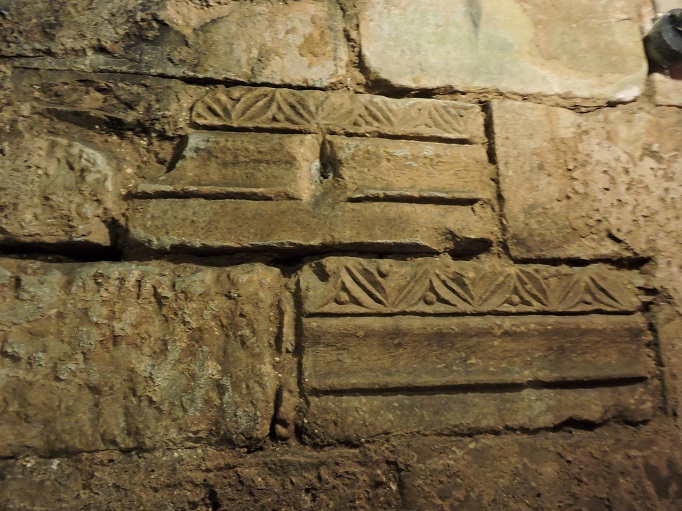
I remember descending down the steep, narrow, stone, stairs, into near darkness. Listening to the story about the crypt’s history made the almost eerie stones, compellingly beautiful.
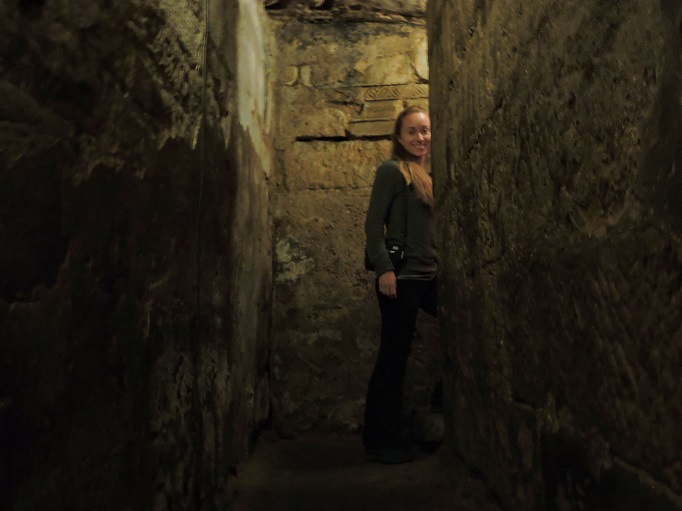
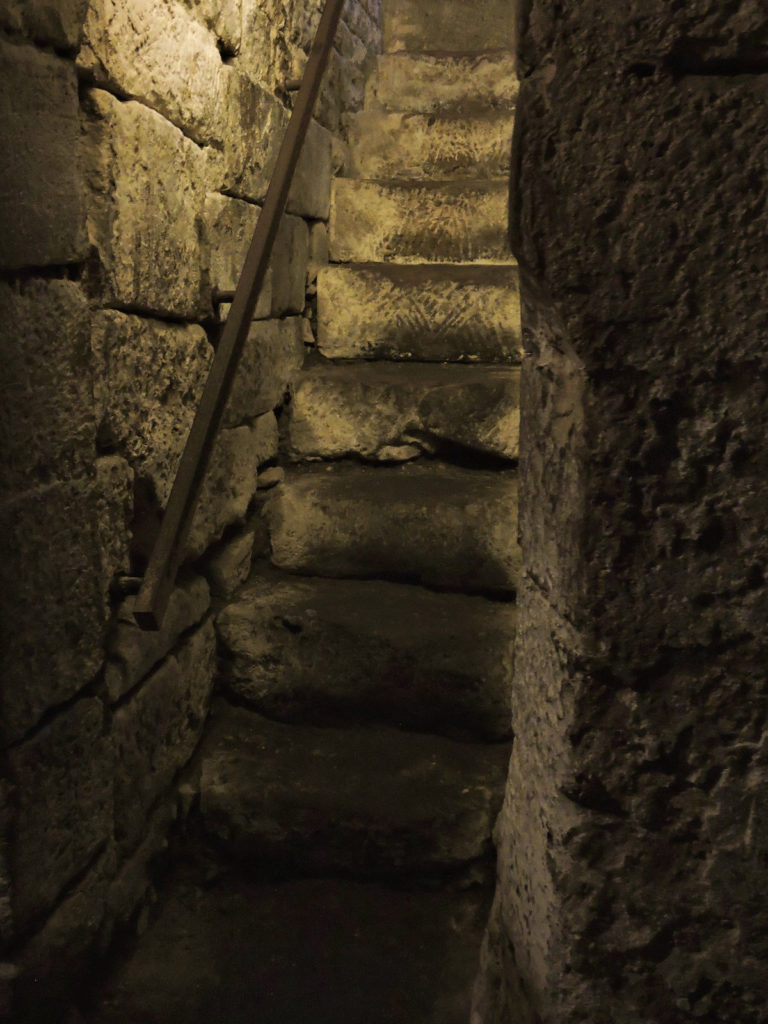
Directly across from the Abbey you’ll see an old stone building and a stone covered archway. This is the Moot Hall and what remains of the old gatehouse. A moot hall traditionally was a meeting or assembly building to decide local issues. Hexham’s Moot hall, built in AD 1400, was used as a medieval courthouse and the gatehouse was part of the town’s defenses.
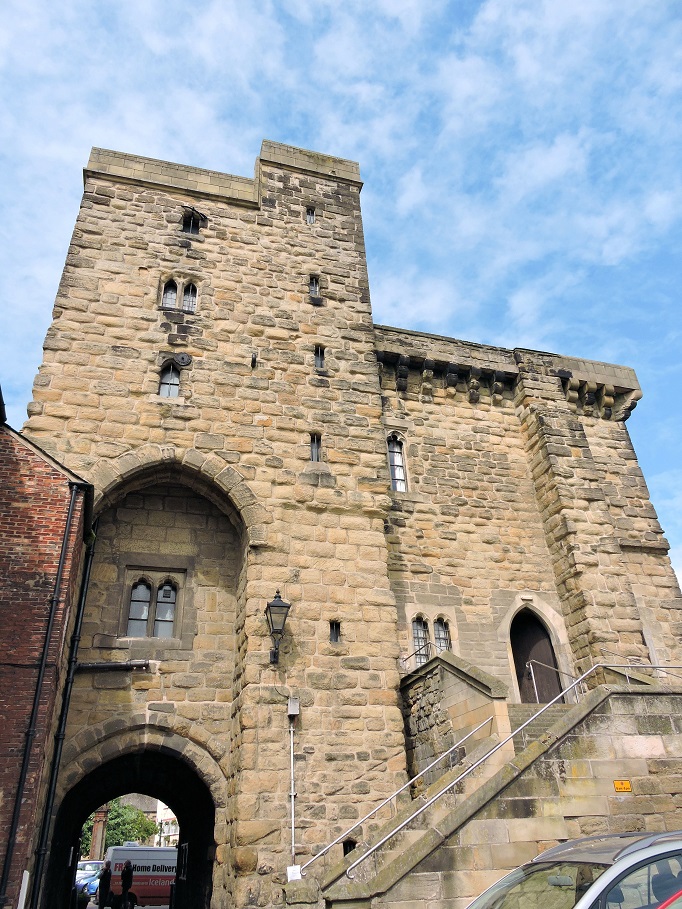
Walk through the gatehouse’s stone archway and you’ll see the Old Gaol just down the street. The old gaol, built between 1330-1333 was apparently one of the first purpose built jails in England. Today it houses a very small museum.
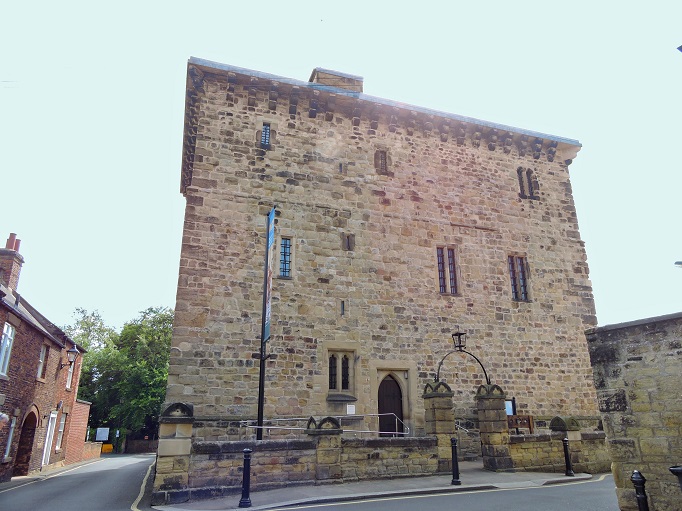
But, I really went to Hexham to explore the wall, so now it’s time to hop aboard the AD 122.
My first stop… Housesteads.
Housesteads –
The ruins of a Roman fort along Hadrian’s Wall. Built around AD 124 right after construction of the wall began in AD 122. The fort housed a garrison of 800 men. At Housesteads one can visit the excavated remains of the fort as well as a very small but pleasant and informative museum. Take note, If you are short on time or have mobility issues, there is a bit of a walk up a slightly steep hillside to get to the fort.
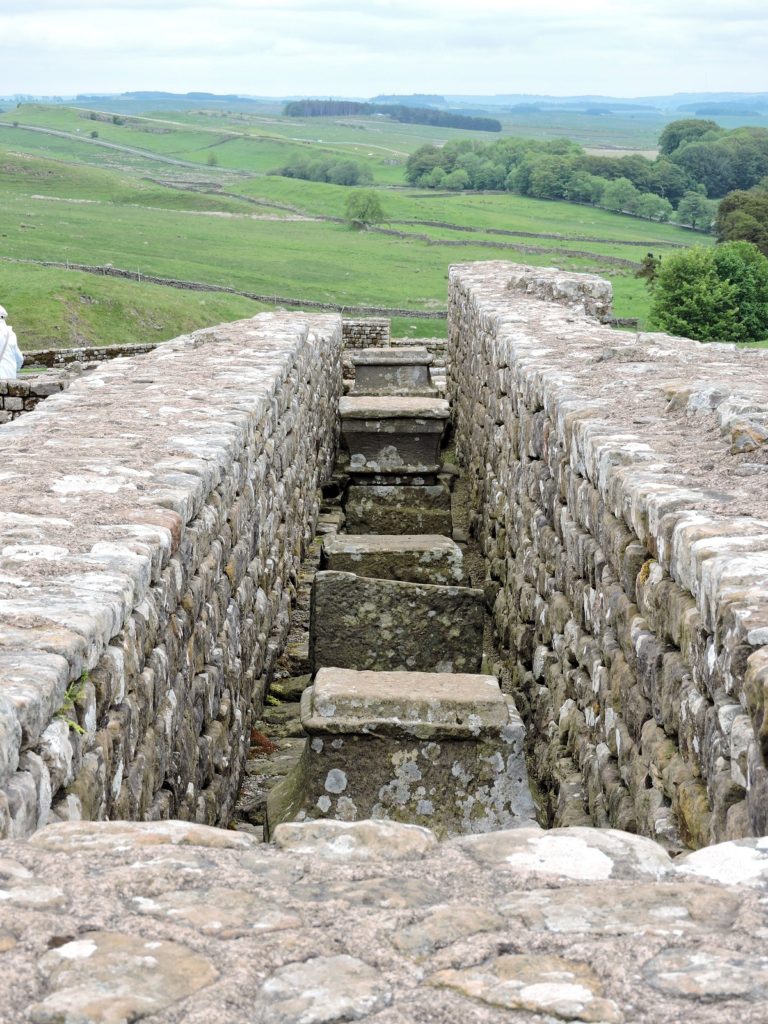
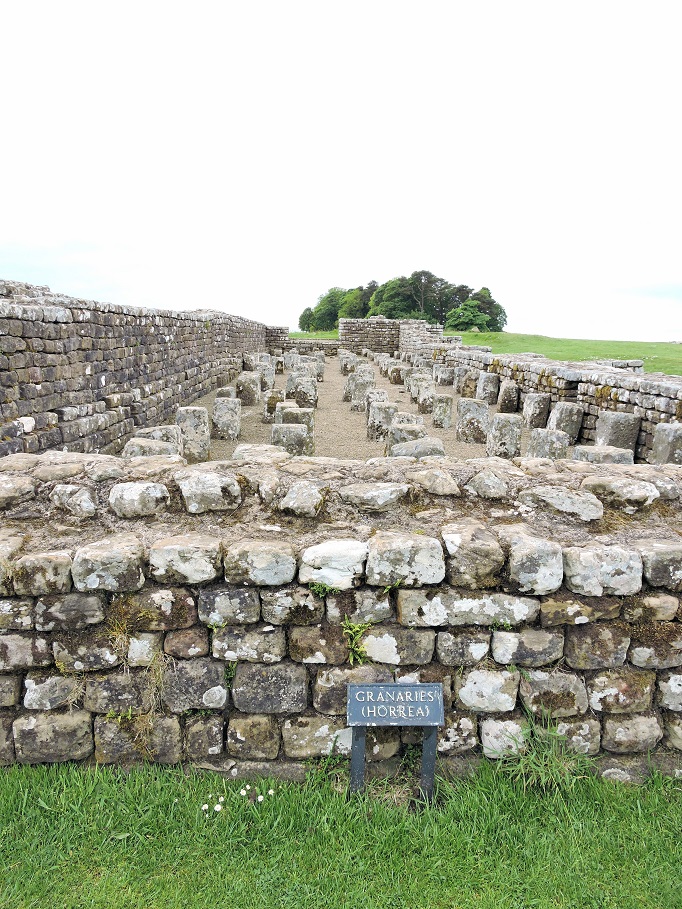
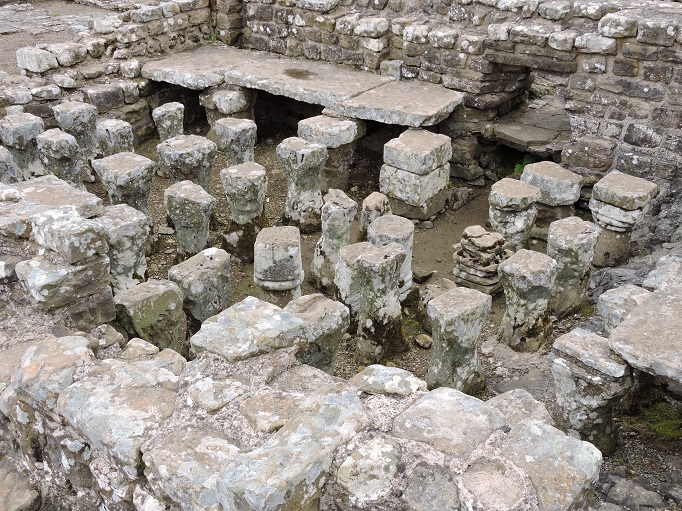
My next stop was Vindolanda.
Vindolanda –
Vindolanda was a Roman auxiliary fort that pre-dates Hadrian’s Wall, indeed it was actually an important base for the construction of the wall. The Fort was under Roman occupation from AD 85 to AD 370. There is a great museum at the site which continues to add new found artifacts from ongoing excavations. One can walk past and watch these ongoing excavations, which usually take place every summer. The museum gives a fantastic look into life at the time of Roman occupation, with lots of everyday artifacts on display. This includes a gallery room on the renowned Vindolanda tablets; thin pieces of wood used to write letters dating to the 1st and 2nd centuries AD. While most of the tablets are housed at the British Museum in London, some of them may be viewed here where they were discovered.
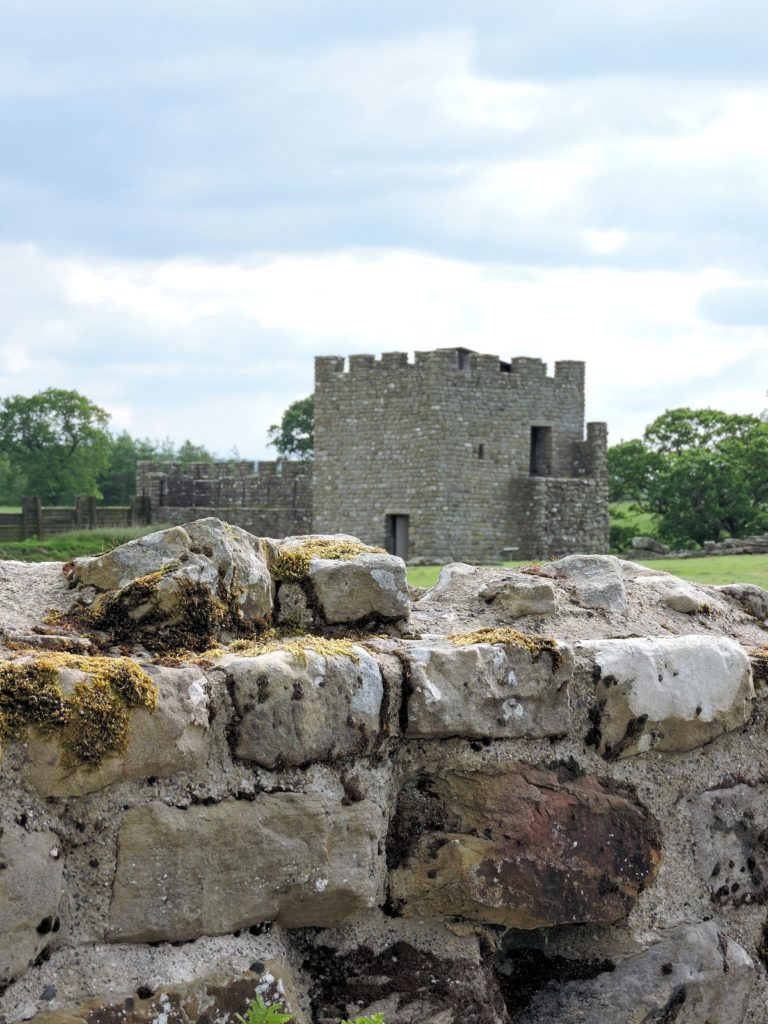
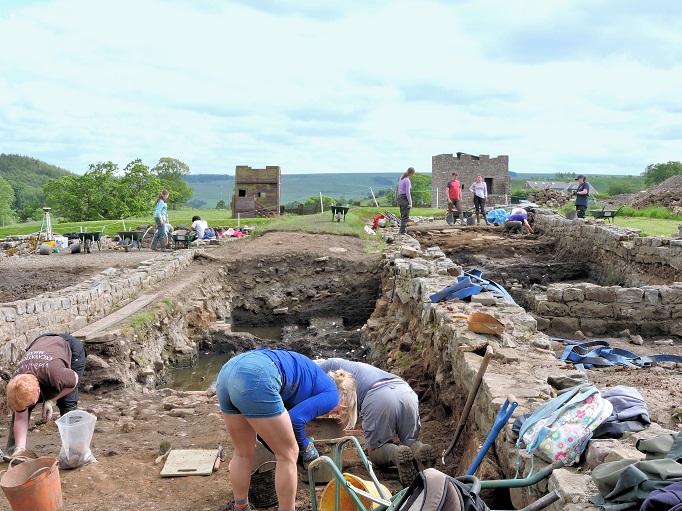
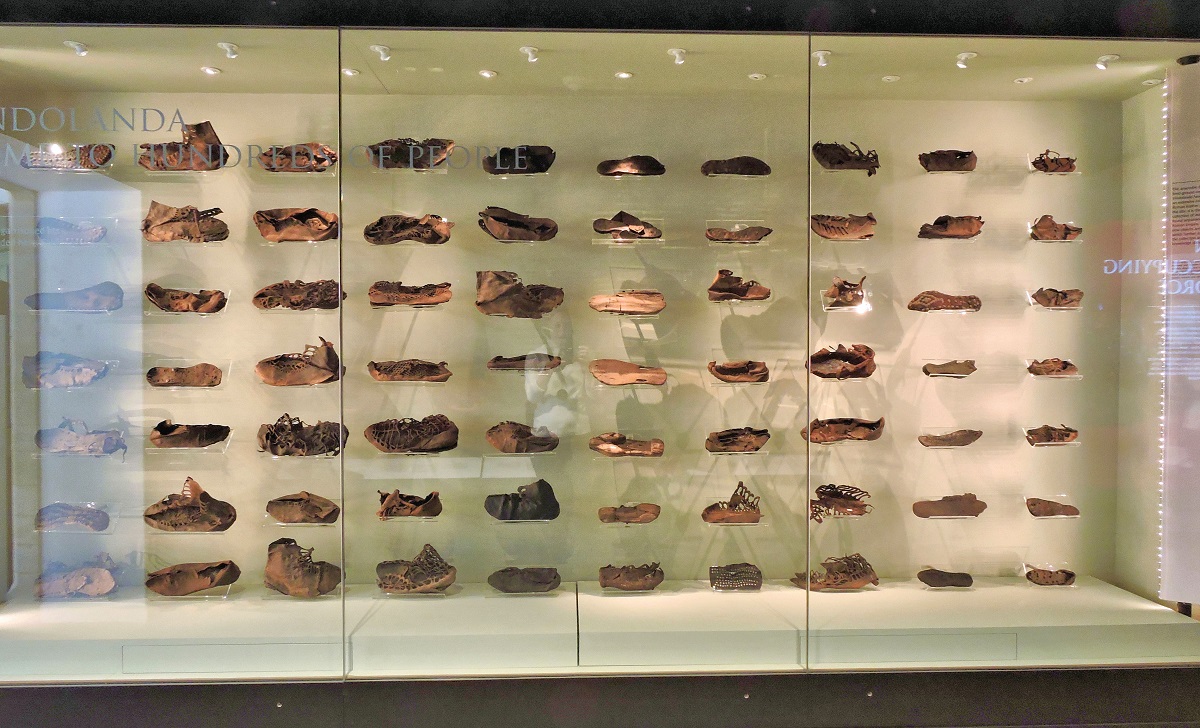
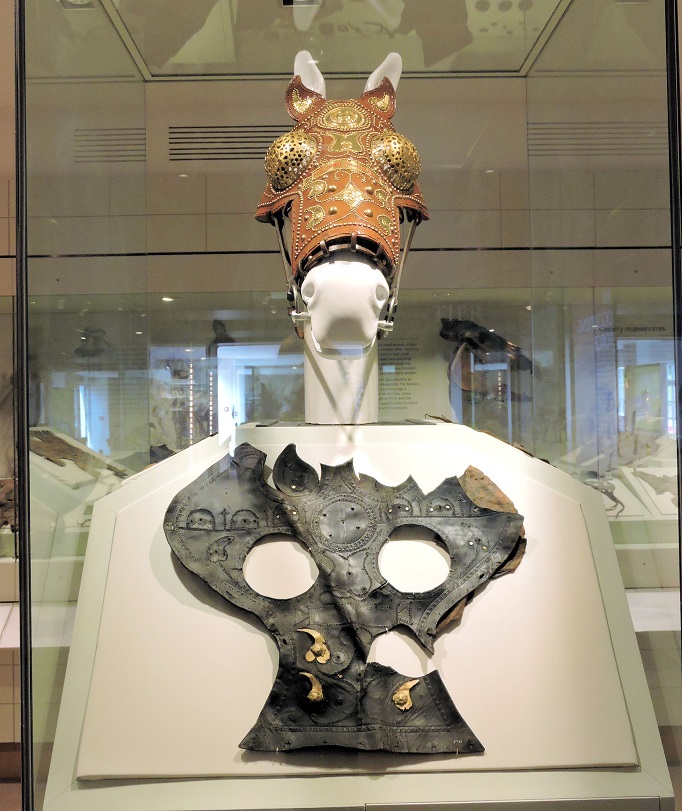

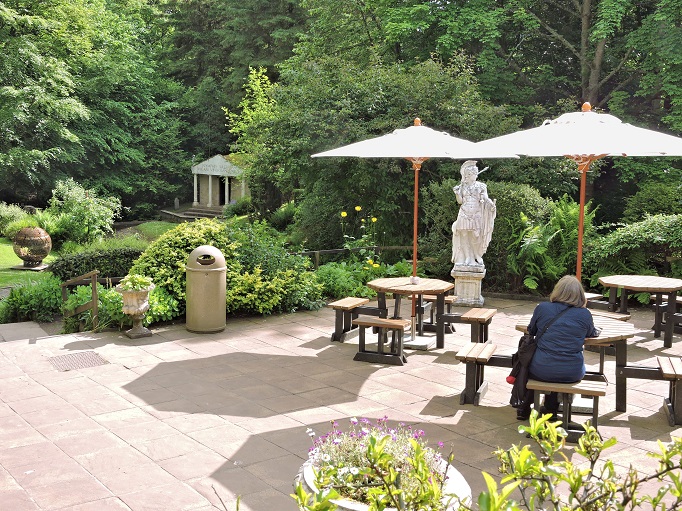
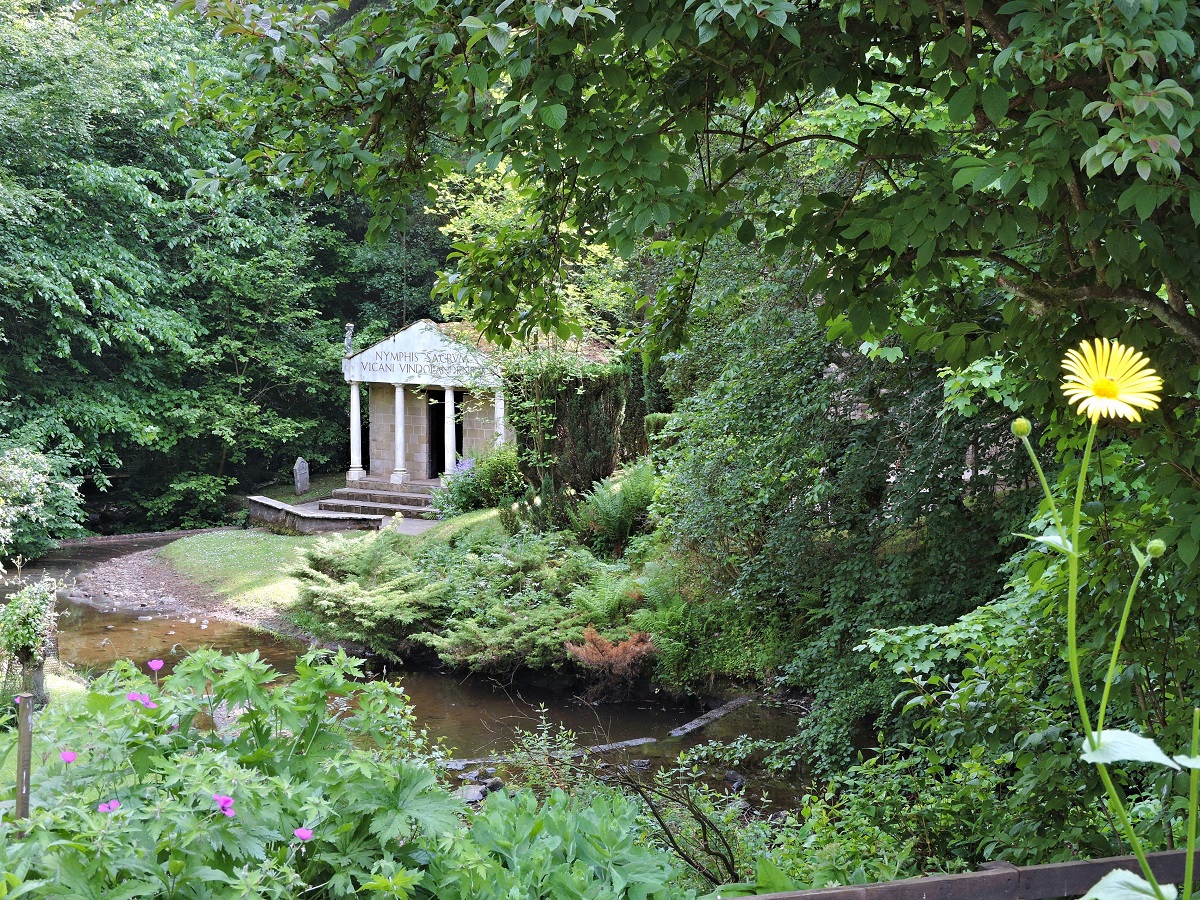
Where to next?
Let’s walk along the Hadrian Wall Path to milecastle 39 and to Sycamore Gap.
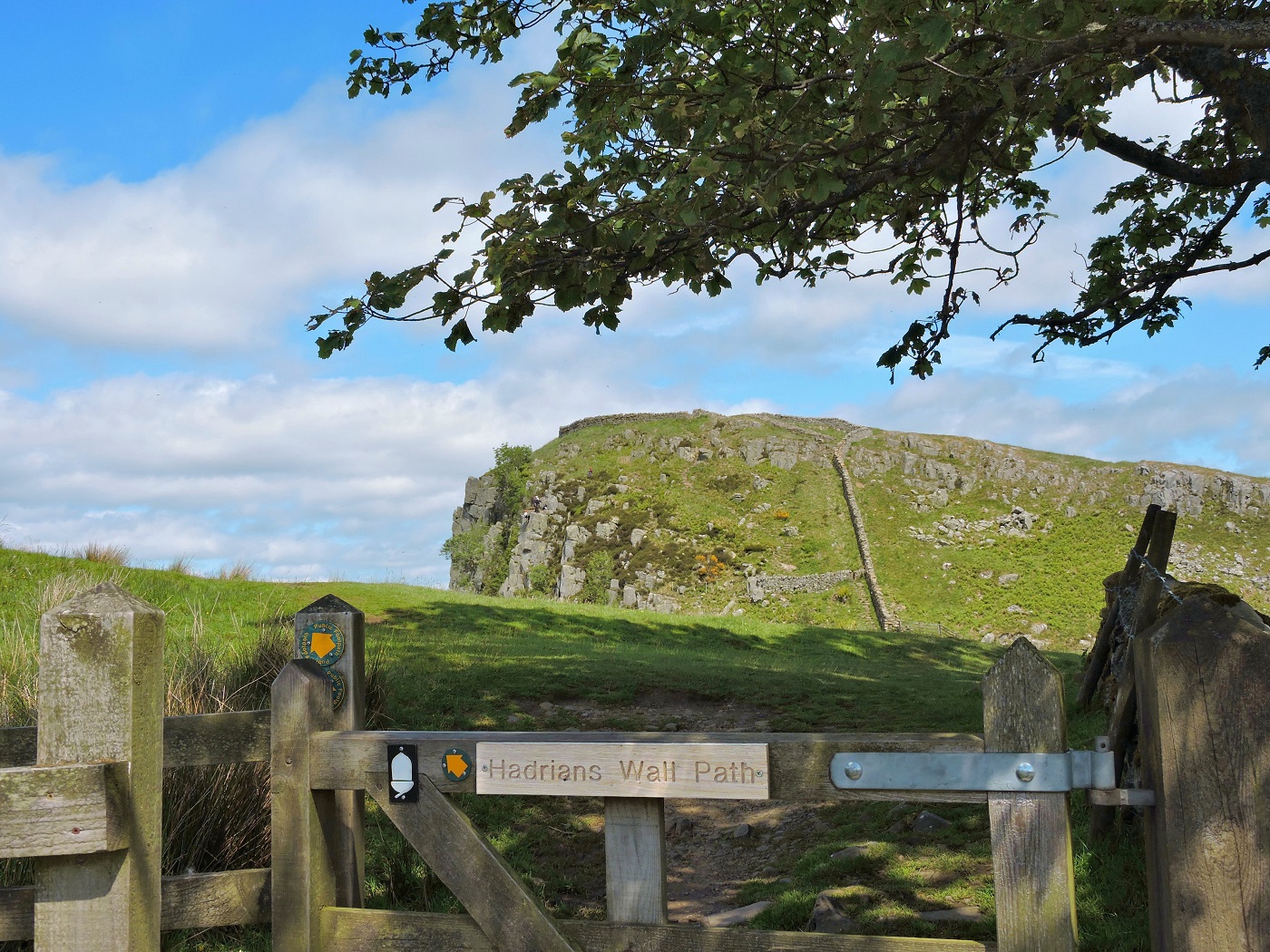
Hadrian’s Wall Path –
Hadrian’s Wall Path is a UK national trail that runs 84 miles coast to coast alongside Hadrian’s Wall. From Bowness-on-Solway in Cumbria, in the west; to the perfectly named Wallsend in Newcastle Upon Tyne, in the East. The official national trail website at nationaltrail.uk estimates walking the entire length to take seven days. I did a day hike myself and walked just a small segment and it was incredible. The views, even the air itself, everything was infused with wild beauty.
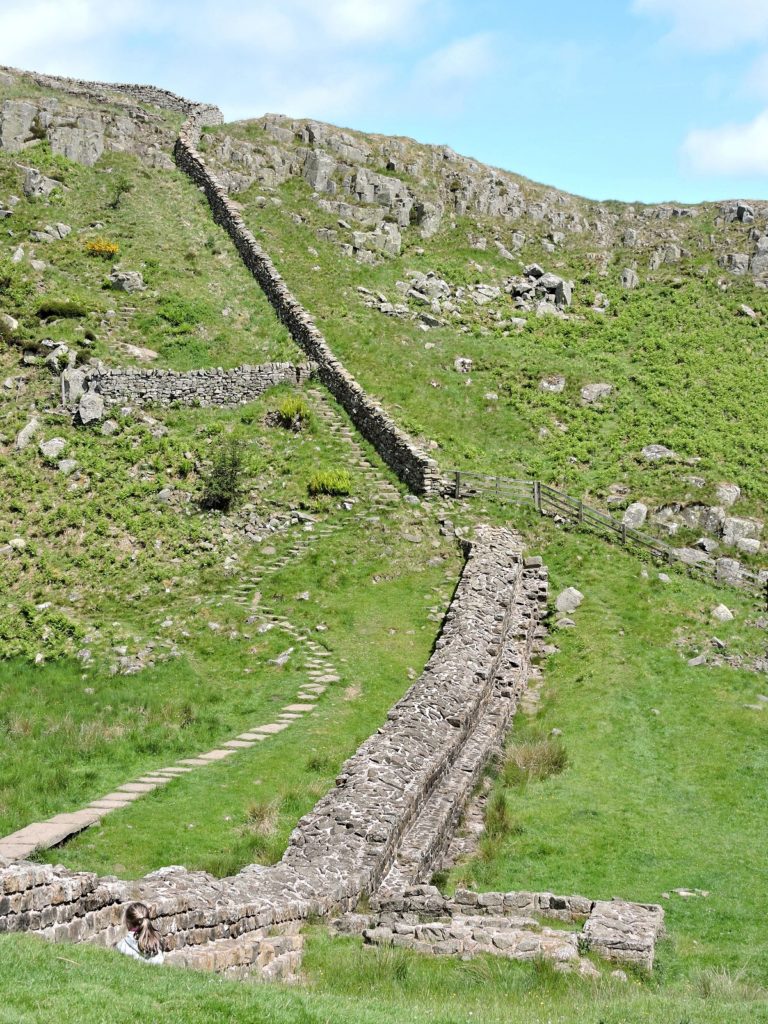
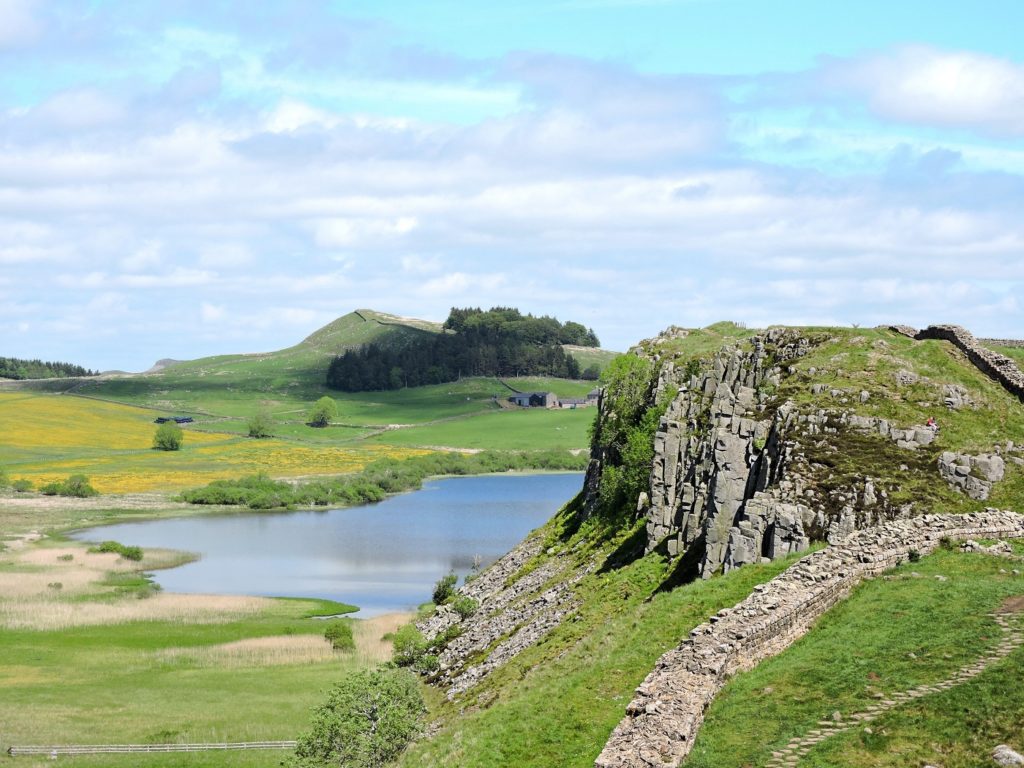
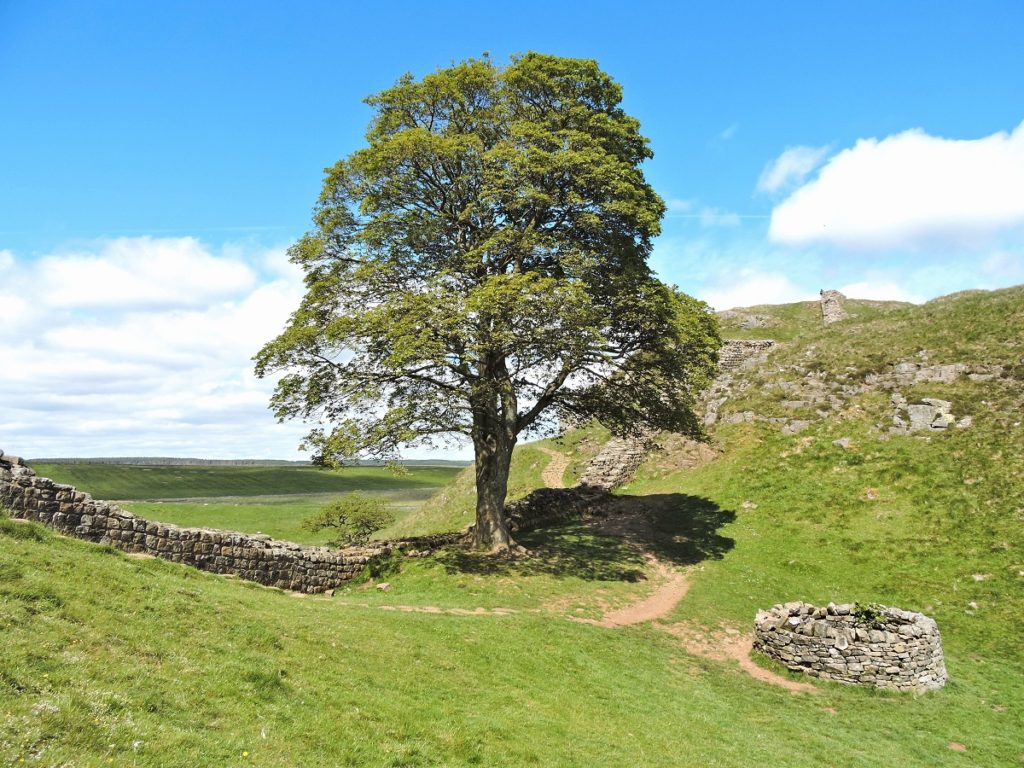
~ Sadly the eminent and beautiful Sycamore of Sycamore Gap was maliciously cut down in the fall of 2023. However, the BBC reports that eight new shoots have emerged from the stump and the beauty that was will hopefully be again. ~
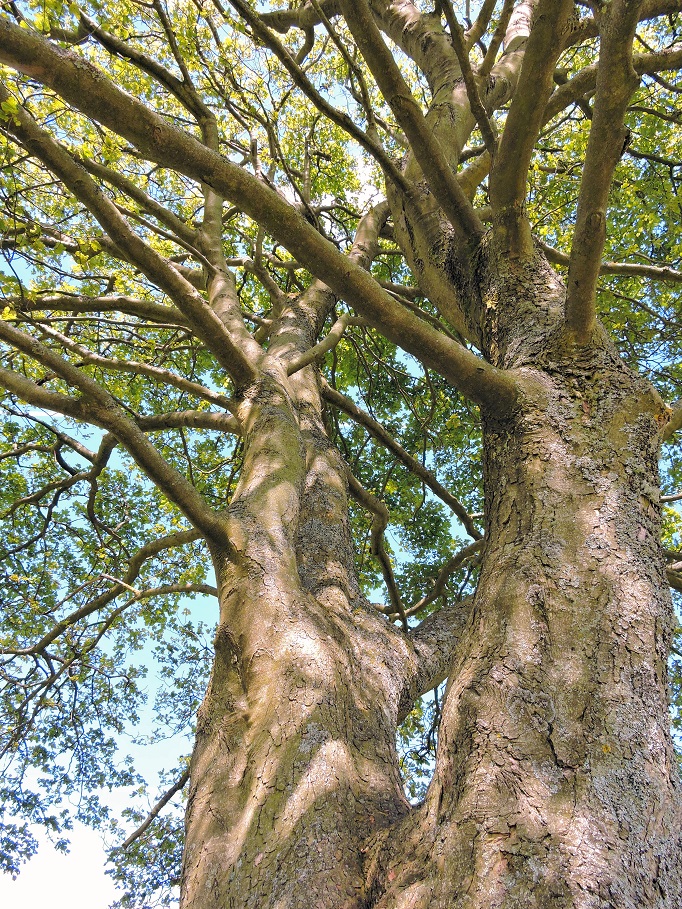
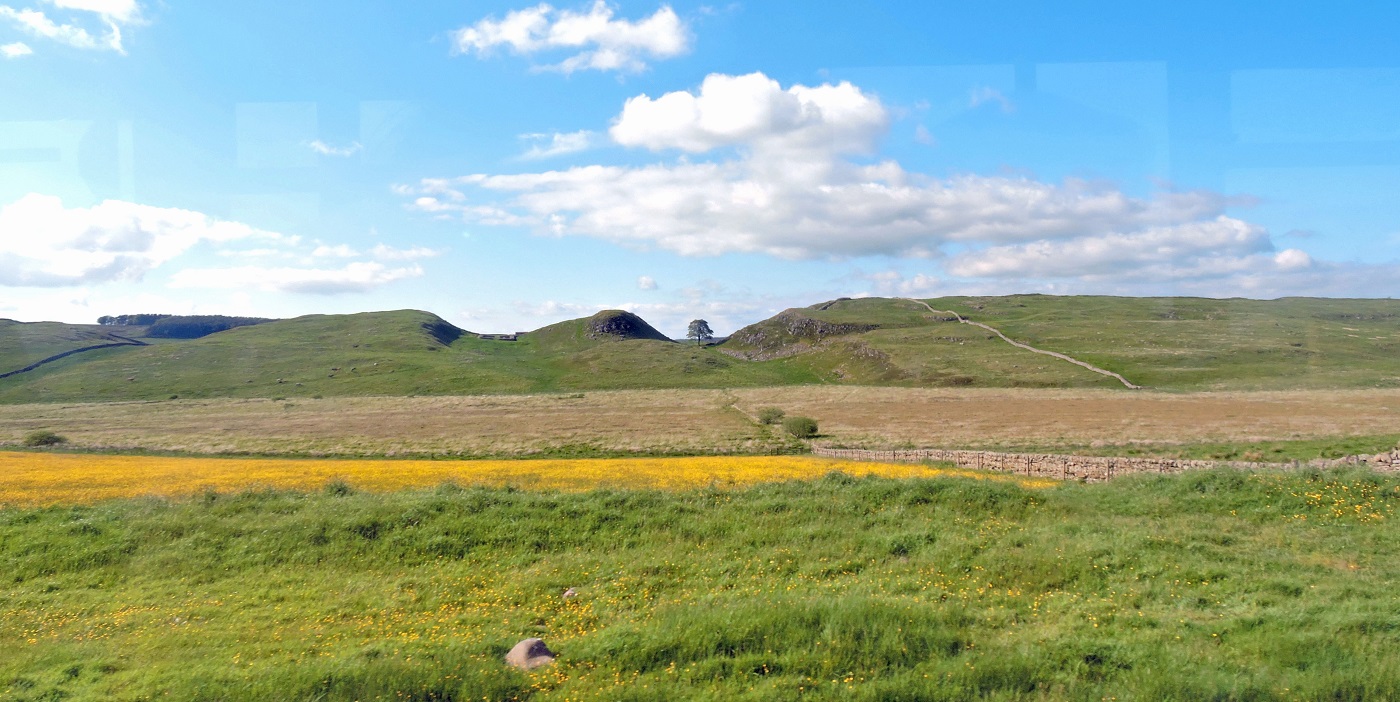
Other sites the Ad 122 bus will take you to include the Roman Army Museum and Chesters Roman Fort and Museum.
The Roman Army Museum is an interactive museum with lots of replicas and exhibits geared towards children.
The Roman fort at Chesters was a cavalry fort built in AD 123. It housed a garrison of 500 cavalry troops which guarded the Roman bridge over the River Tyne. The river flowing past the fort’s ruins is especially scenic. The museum at Chesters is very small but somewhat unique in its two fold approach to history. It not only houses the original excavator, John Clayton’s collection, it also tries to preserve the displays and the feel of Clayton’s original museum. Of course, as such it might not appeal to everyone, because it’s sort of like walking into a jumbled, very outdated museum, lol. But, I think if you understand why, it’s kind of cool.
After spending a couple days walking along Hadrian’s Wall and exploring the ruins of Roman forts, I left Hexham and made my way, a short distance, to Langley Castle Hotel.
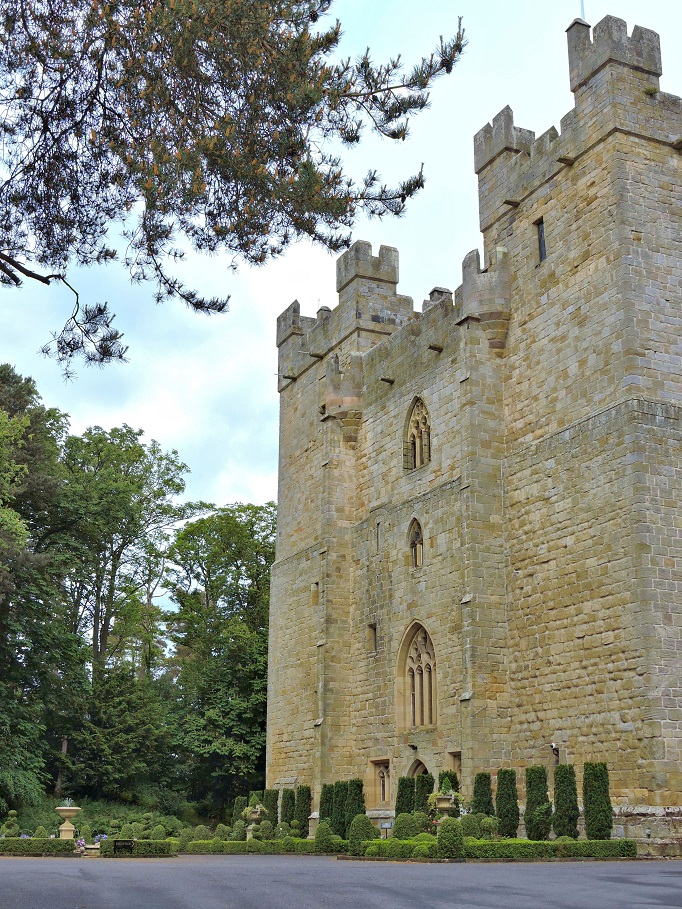
Langley Castle Hotel –
Langley Castle Hotel is a restored medieval tower house, built in 1350, with walls seven feet thick. In my opinion, it’s one of the few castle hotels in England that has kept and preserved its original medieval feel inside as well as outside. With many of the castles in England that are converted to hotels, the castle feel ends once you step inside and there’s nothing… unique anymore. Not so at Langley. It was exactly what I dreamed a castle hotel would be, luxurious yet still medieval, beautiful yet still mysterious.
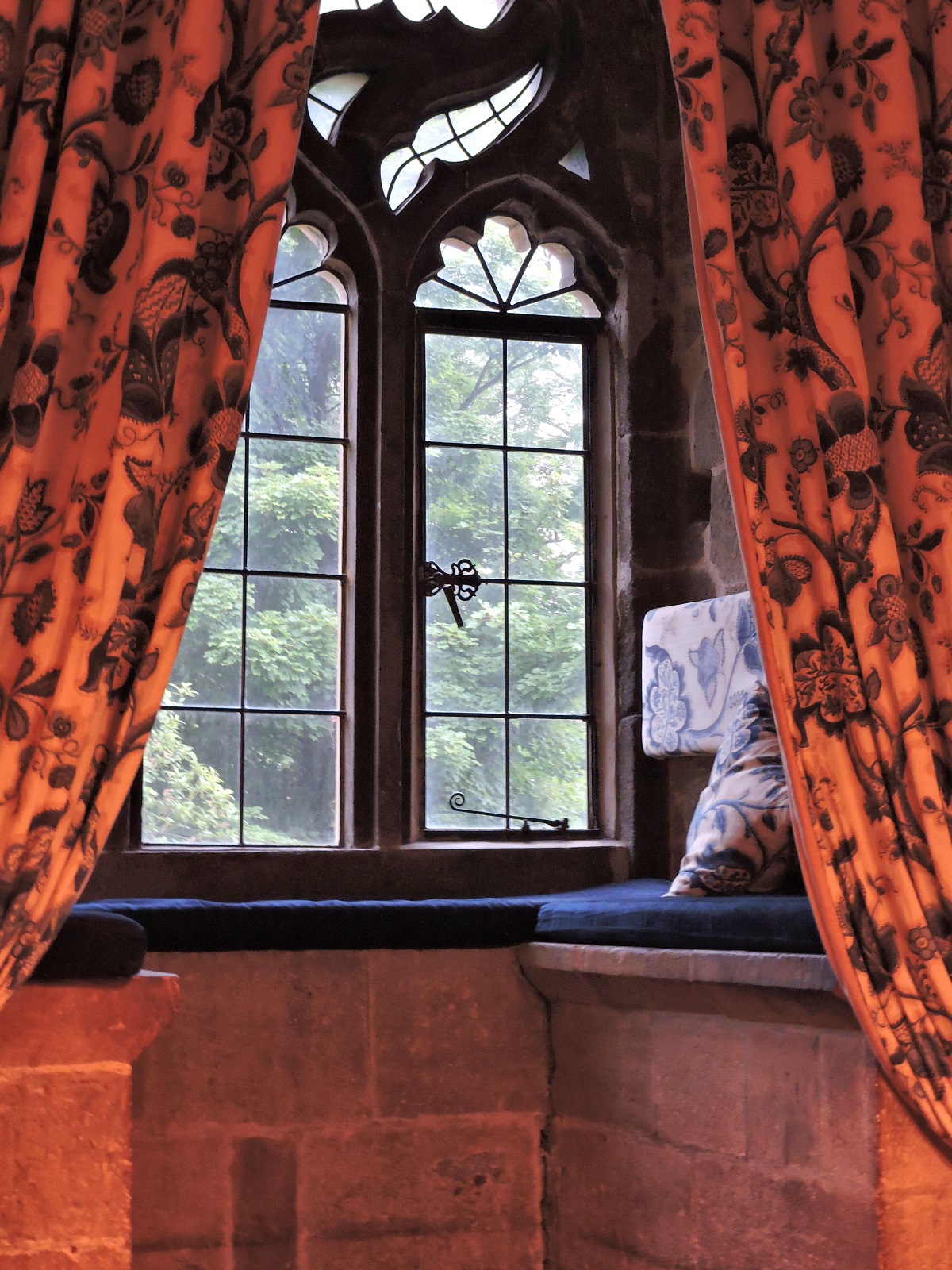
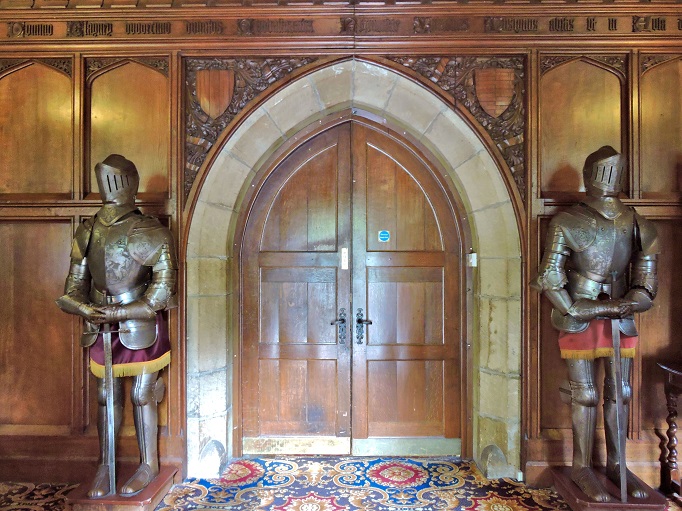
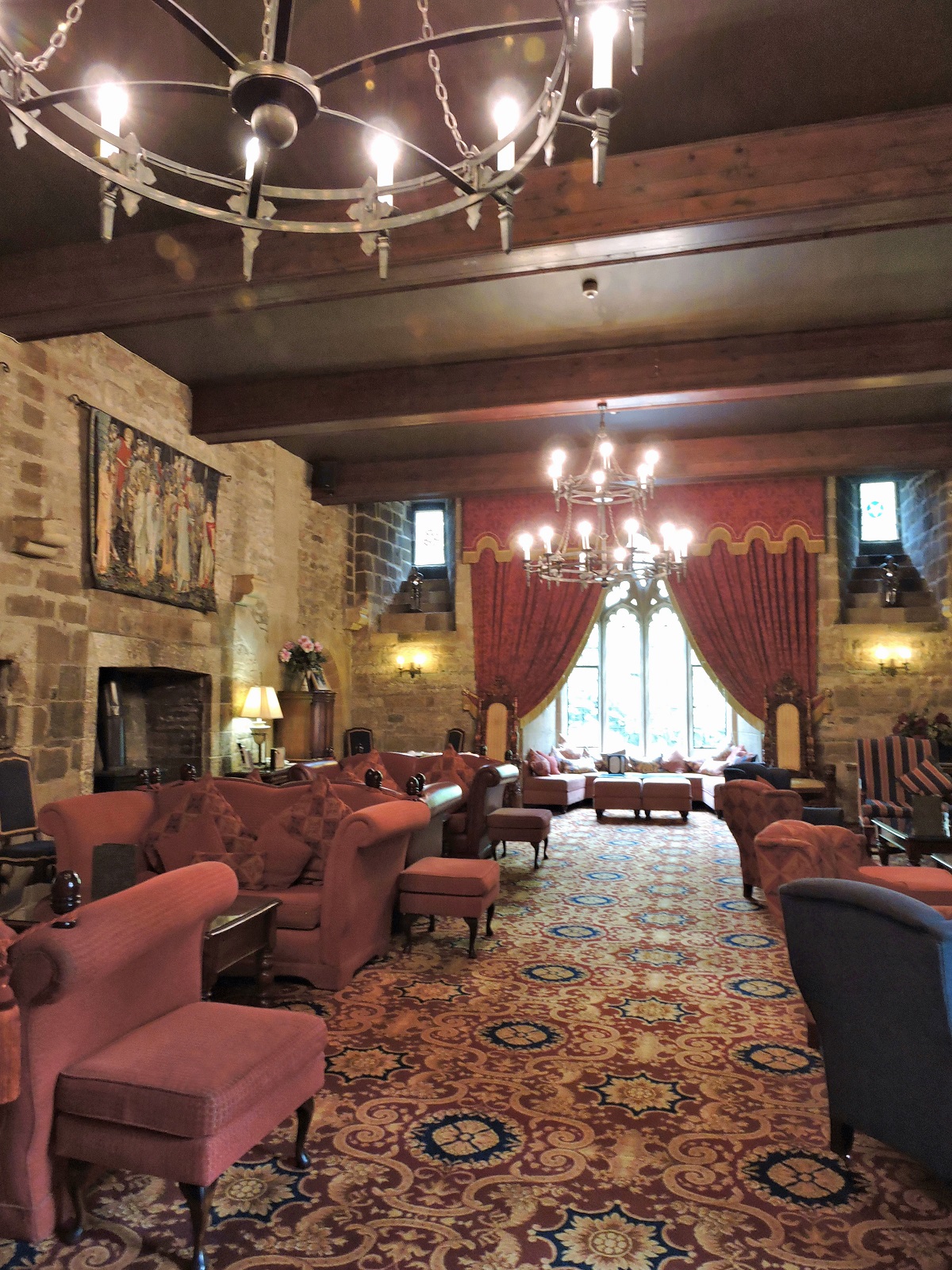
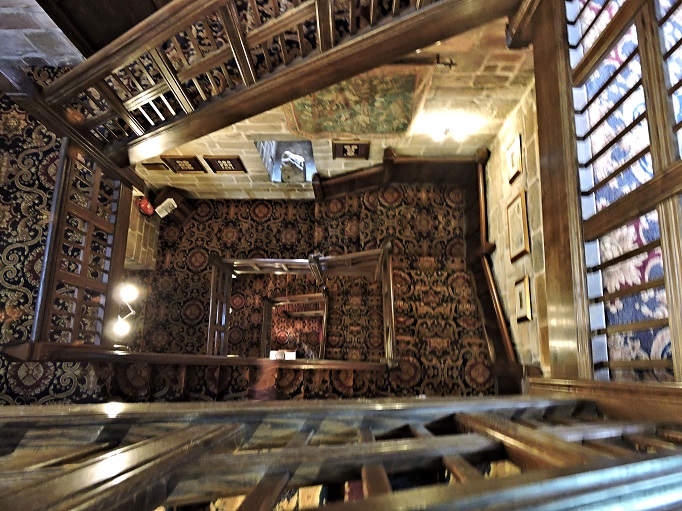
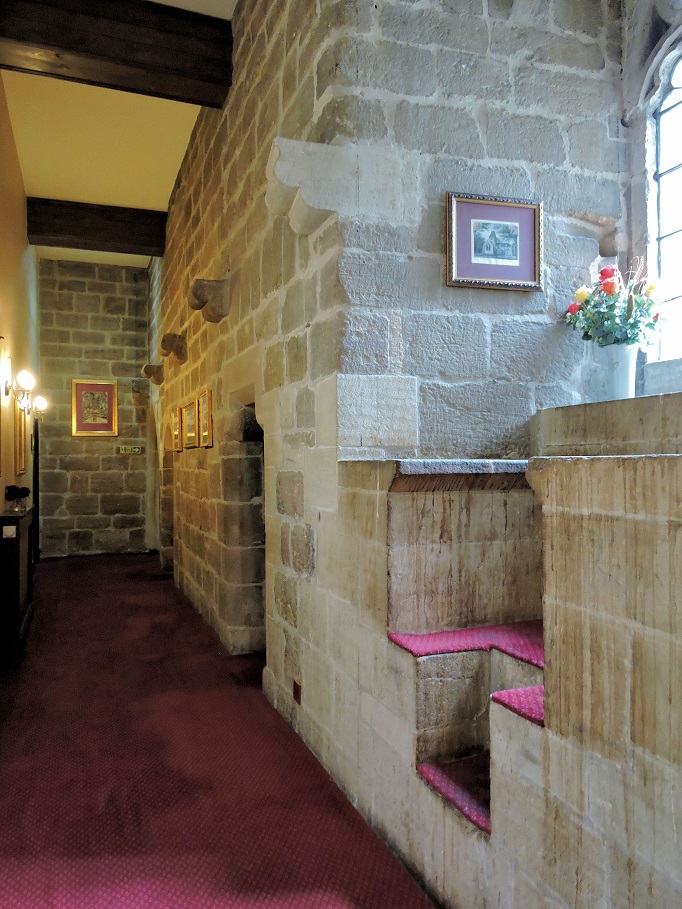
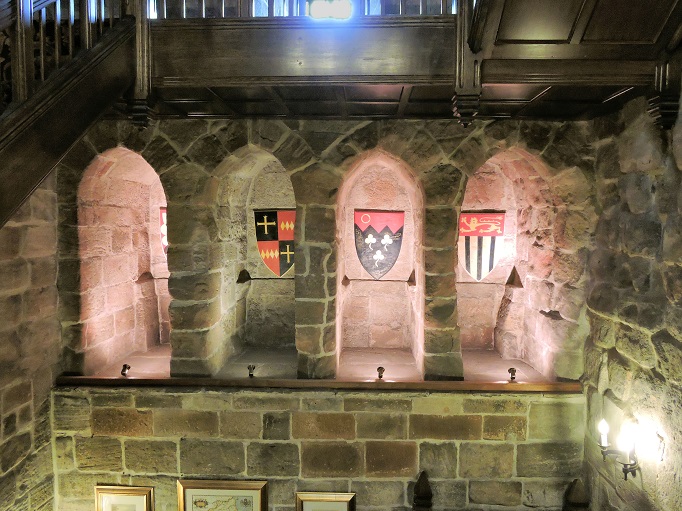
The hotel at Langley Castle is also well situated as a base for exploring Hadrian’s Wall, although perhaps more so for those with their own transportation. But even without transportation of your own, the hotel can help you book daily tours to visit the sites.
While there, one should definitely explore the medieval tower house itself. Langley castle offers daily battlement tours, which take place after breakfast.
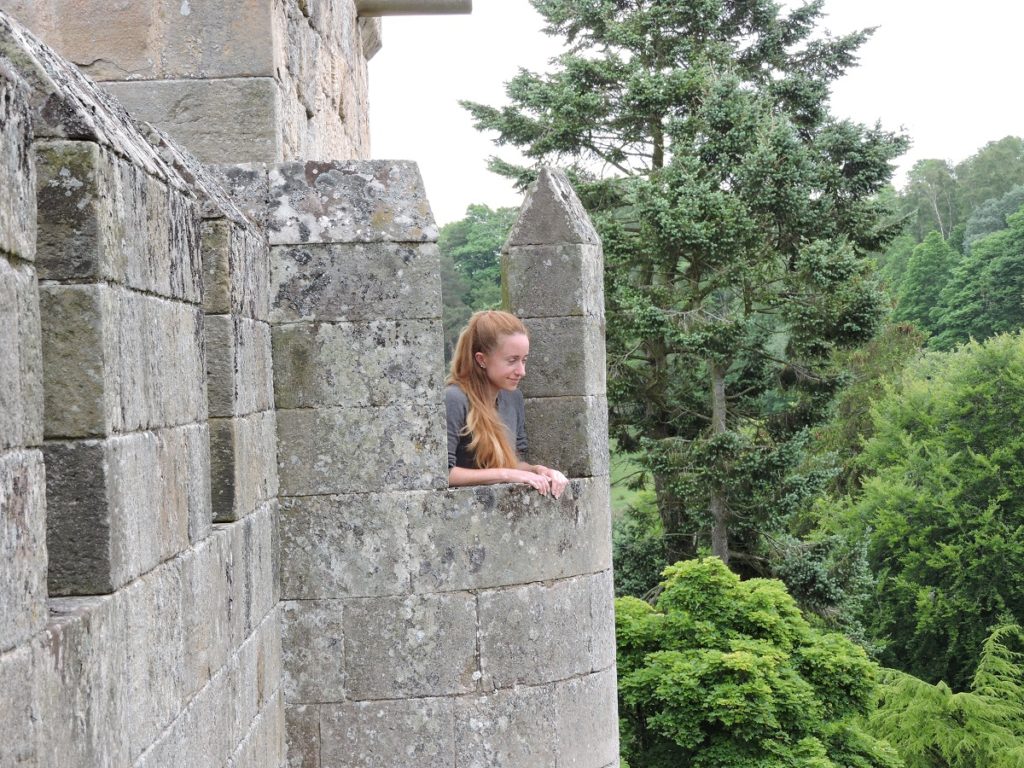
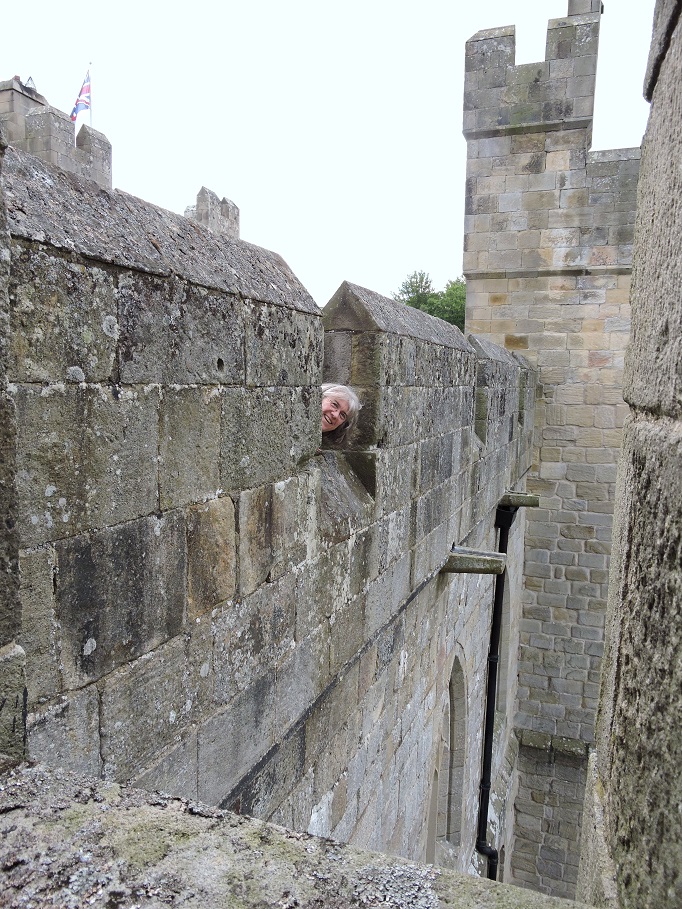
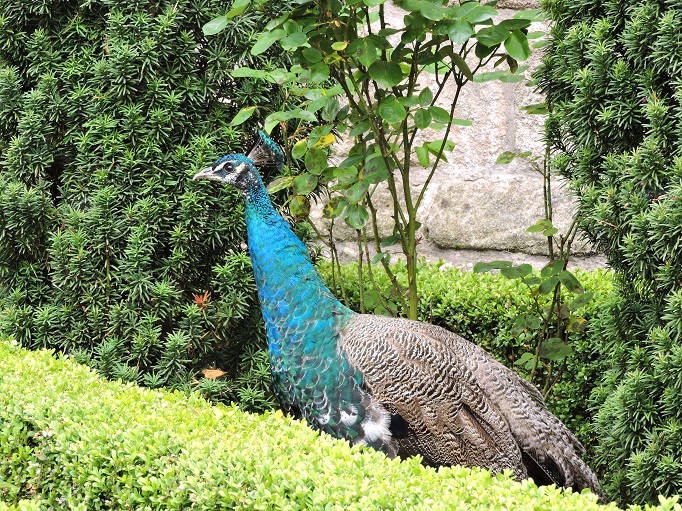
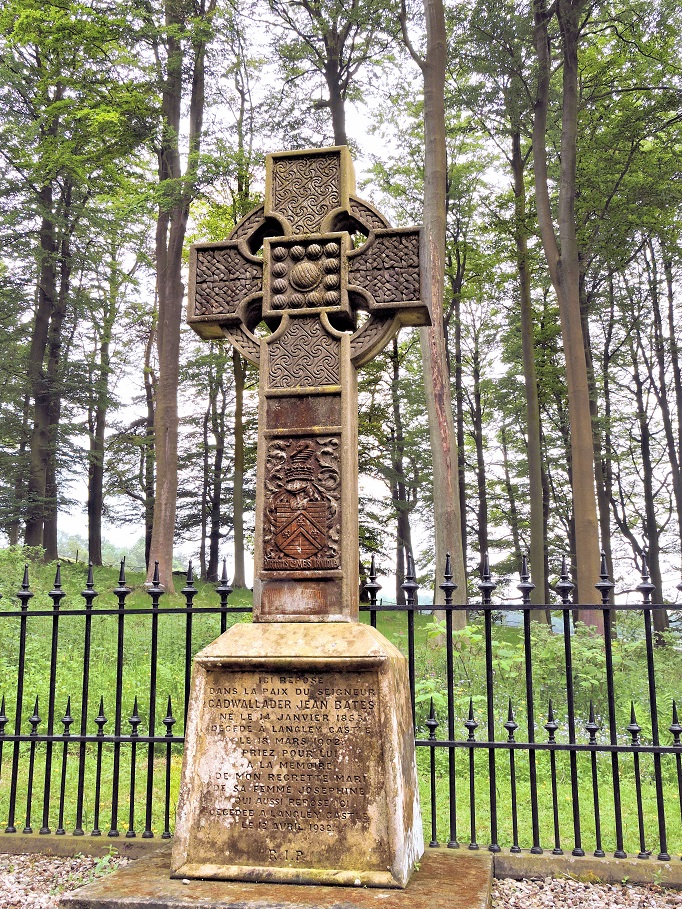
There are also several trails near the castle. On the second day of my stay I walked along a footpath from Langley Castle to Haydon bridge. Haydon bridge being both the name of an old stone bridge built in the 14th century and the small town that grew around it.

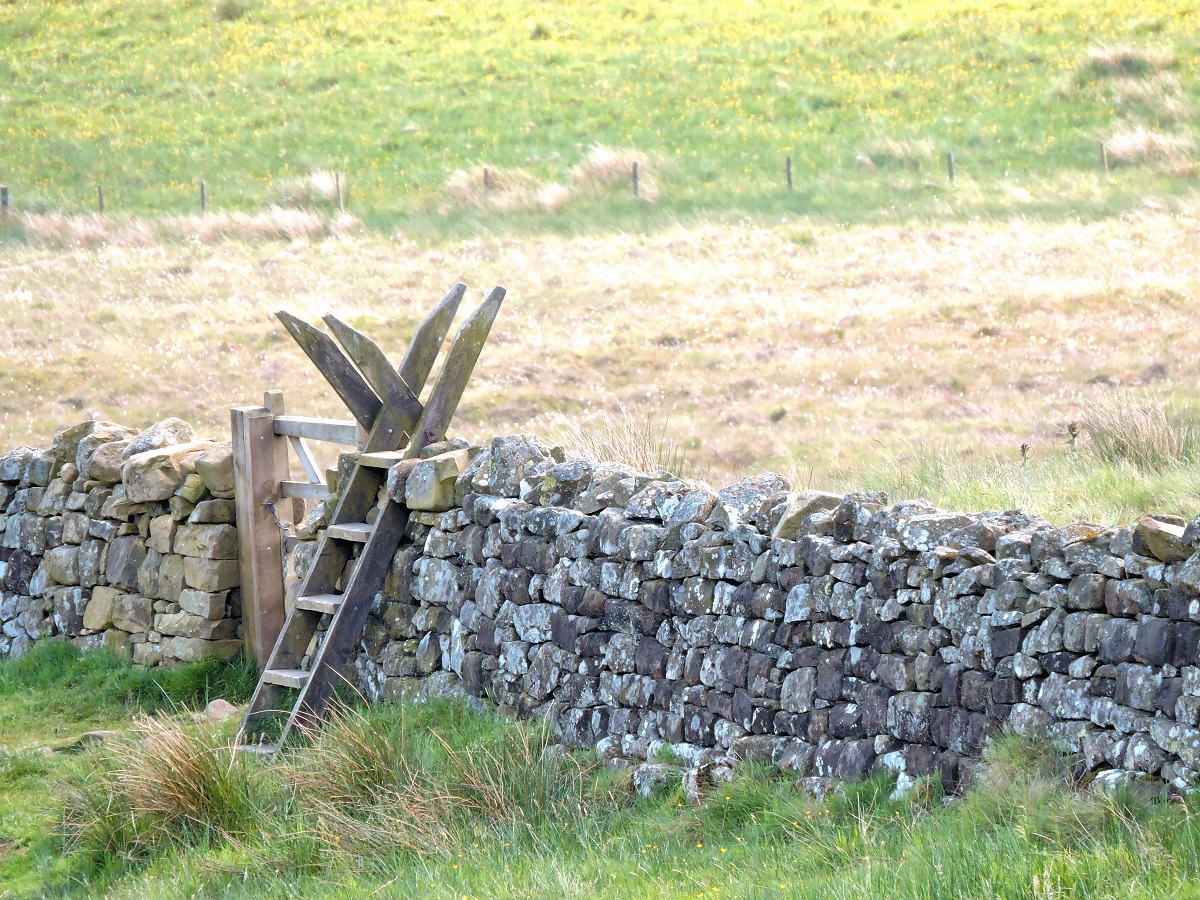
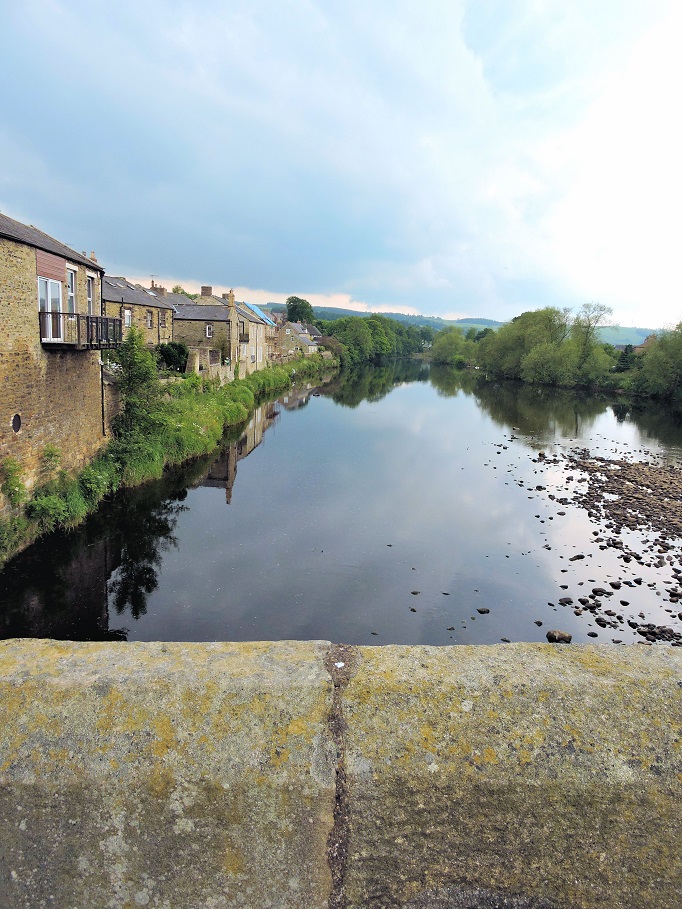
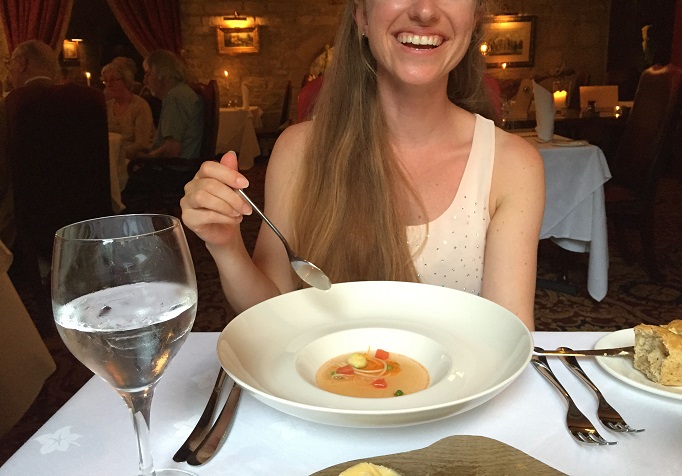
That evening, after dinner, which consisted of more fanfare than substance 🙂 I sat at my room’s cushioned window seat, built into the castle’s thick stone walls and watched peacocks stroll the manicured grounds below. A knock came at the door and a bedtime treat was delivered… cookies, or rather, biscuits as they’re called in England. I smiled…. what a lovely end to my adventure in Northumberland.
